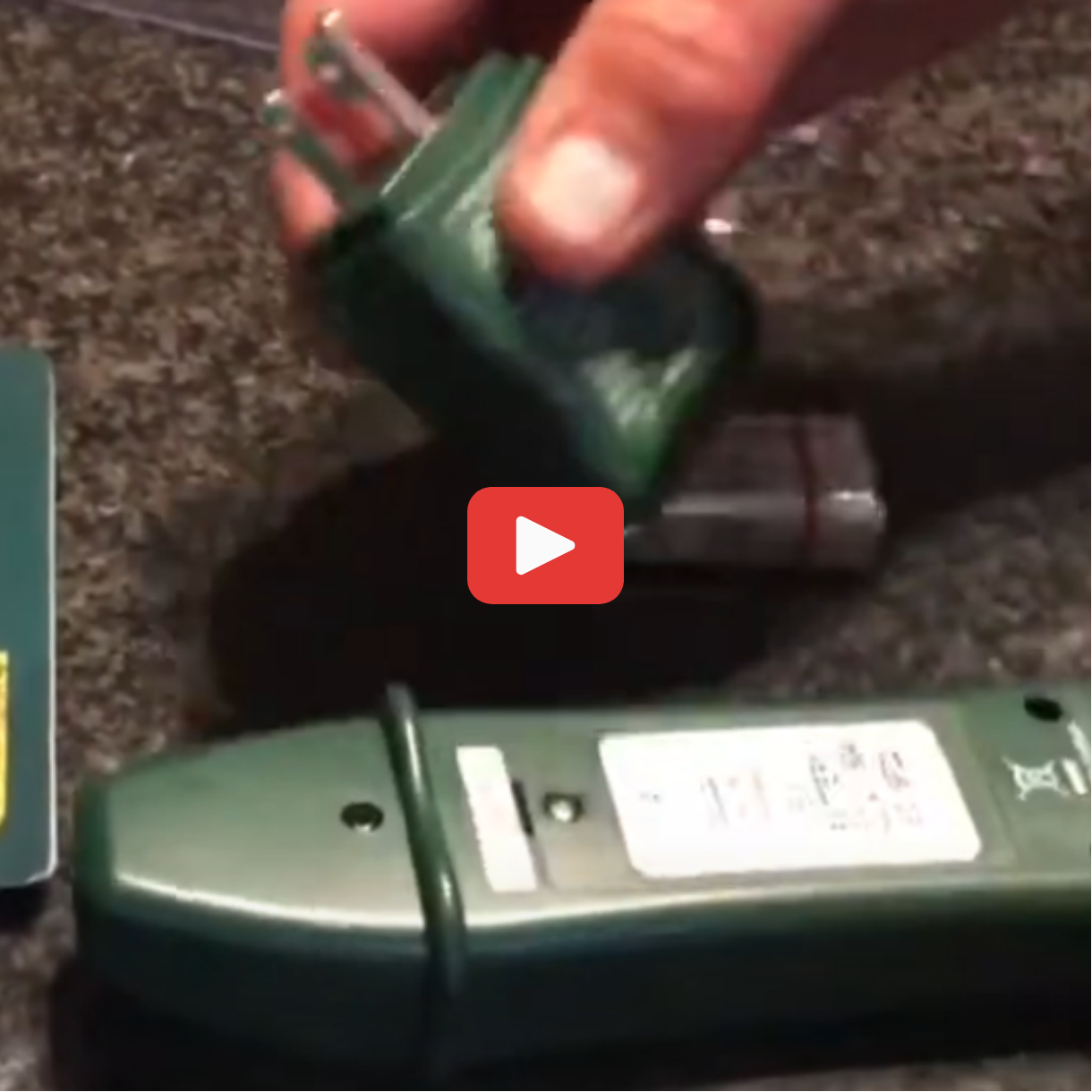Key Takeaways
- Unboxing reveals a transmitter, receiver, and necessary accessories.
- Setup requires a Phillips screwdriver for battery installation.
- The device offers eight functions and a GFCI tester to ensure circuit accuracy.
Unboxing the X Tech CB 10 AC Circuit Breaker Finder
Components Included
The X Tech CB 10 AC Circuit Breaker Finder includes a transmitter, receiver, and a battery. The transmitter conveniently plugs into the back of the receiver when not in use.
Package Contents
- Transmitter
- Receiver
- Battery
- Directions mini disk
- Advertisements
- Package insert
To get started, you'll need a Phillips screwdriver to install the battery by removing the door in the back.
Setting Up the Device
Battery Installation
To install the battery, begin by using a Phillips screwdriver to remove the cover on the back of the receiver. Once the cover is off, plug in the supply line and slide the battery into place. After the battery is inserted, put the cover back on and secure it with the Phillips screw. This completes the battery installation process.
Attaching the Transmitter to the Receiver
When the transmitter is not in use, you can conveniently attach it to the back of the receiver for storage. Simply plug the transmitter into the receiver’s designated slot. This keeps the components together and ensures that the transmitter is easily accessible when needed.
Exploring the Transmitter Features
Functionality Overview
The X Tech CB 10 AC circuit breaker finder includes a transmitter, receiver, and battery. The transmitter has eight different functions plus a GFCI tester. A convenient feature allows the transmitter to plug into the back of the receiver when not in use.
- Transmitter Functions:
- Eight distinct functions
- Integrated GFCI tester
- Two green lights indicate correct circuit operation
GFCI Test Execution
Plug the transmitter into an outlet and observe for two green lights. For GFCI testing, press the red button on the transmitter. A red light will flash and go out, indicating that the GFCI has tripped. Reset the GFCI to resume regular operation.
Operation of the Receiver
Powering On and Initial Testing
To power on the receiver, start by installing the battery. Remove the door in the back using a Phillips screwdriver. Insert the battery, replace the cover, and secure it with the screw. Turn on the receiver by holding it to the side and listen for a beep when it is placed next to the transmitter. Ensure that the circuit is operating correctly by checking for green lights.
Sensitivity Adjustment
When you first use the receiver, it will be set to the highest sensitivity. This will cause it to beep at every circuit. Adjust the sensitivity by turning the dial to lower the sensitivity level. Turn the dial slowly to hone in on the specific breaker that the transmitter is connected to. Use slight adjustments until the correct breaker is identified.
Locate the Circuit Breaker
Once the sensitivity is adjusted, walk towards the breaker panel. The receiver will beep steadily as you approach the correct breaker. Use the light on the receiver as an indicator; it will signal the specific breaker. Click the identified breaker and verify the status of the circuit to ensure it's the correct one.
Demonstration and Results
The X Tech CB 10 AC circuit breaker finder includes a transmitter, a receiver, and a battery. To start, install the battery by removing the back cover with a Phillips screwdriver. Insert the battery, replace the cover, and secure it with the screw.
Components:
- Transmitter
- Receiver
- Battery
- Directions Mini Disk
When you plug in the transmitter, two green lights indicate a correctly operating circuit. The transmitter also includes a GFCI tester. Press the button, and if the red light flashes and goes out, it means the GFCI has tripped and is functioning properly.
Next, turn on the receiver and hold it close to the transmitter to ensure it is working. The receiver starts beeping, signaling it has detected the transmitter. To identify the correct breaker, lower the sensitivity on the receiver as it beeps at every circuit. Lower the dial slowly to isolate the specific breaker connected to the transmitter. The light on the receiver will indicate the correct breaker.
After identifying the correct breaker, switch it off to verify by checking if the transmitter's signal upstairs ceases. This confirms you have successfully found the corresponding breaker.
Conclusion
To operate the Extech CB10 AC Circuit Breaker Finder, you will need the included transmitter, receiver, and a battery. Install the battery using a Phillips screwdriver to open the back cover. Once installed, plug the transmitter into an outlet. The green lights indicate the circuit is functioning correctly.
The transmitter features eight functions, including a GFCI tester. Plug it in and press the GFCI button; a flashing red light shows that it has tripped successfully. To use the receiver, turn it on and adjust the sensitivity dial as you hold it near the transmitter. Lowering the sensitivity will help you accurately locate the specific circuit.
With consistent beeping noises, you will be able to identify the correct breaker. Shut off the identified breaker to confirm the connection. The device is straightforward, making it simple for anyone to use.

